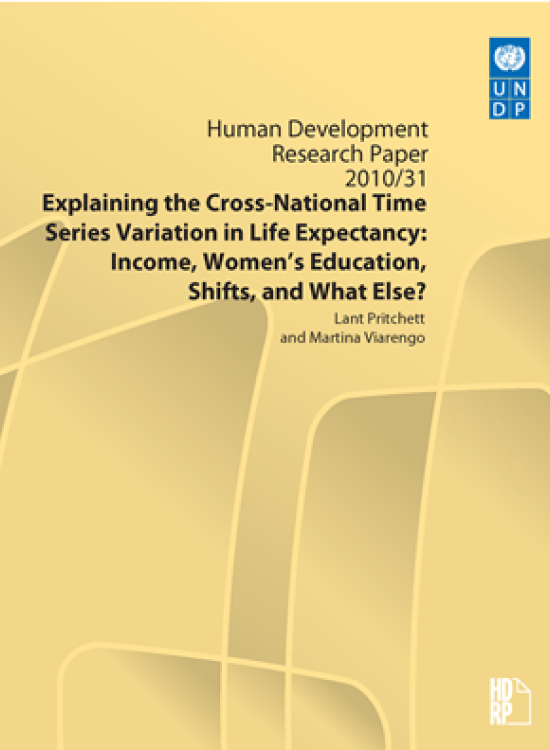Explaining the Cross-National Time Series Variation in Life Expectancy
Income, Women’s Education, Shifts, and What Else?

UNDP (United Nations Development Programme). 2010. Explaining the Cross-National Time Series Variation in Life Expectancy: Income, Women’s Education, Shifts, and What Else?. New York.
Explaining the Cross-National Time Series Variation in Life Expectancy
Income, Women’s Education, Shifts, and What Else?
This paper examines the variation across countries and evolution over time of life expectancy. Using historical data going back to the beginning of the 20th century several basic facts about the relationship between national income and life expectancy are established. The paper shows that even by examining the augmented Preston curve there is no indication that the Preston curve is “breaking down” and no indication from over 100 years of data that a very strong relationship between national income and life expectancy will not persist, particularly over the ranges of income of primary interest to the Human Development Report. Empirical findings show that there are actually fewer “puzzles” than might appear while trying to reconcile the strong cross-sectional association with the time evolution of life expectancy in specific countries and most of the existing “puzzles” come from using either very short time-horizons or very small moves in income per capita when the Preston curve is a long-run phenomena. The paper also discusses the phenomena of the cross-national convergence, with the life expectancy of the poorer countries increasing, in absolute terms, faster than those of the rich countries and how the findings about the augmented Preston curve relate to discussions of health policy.

